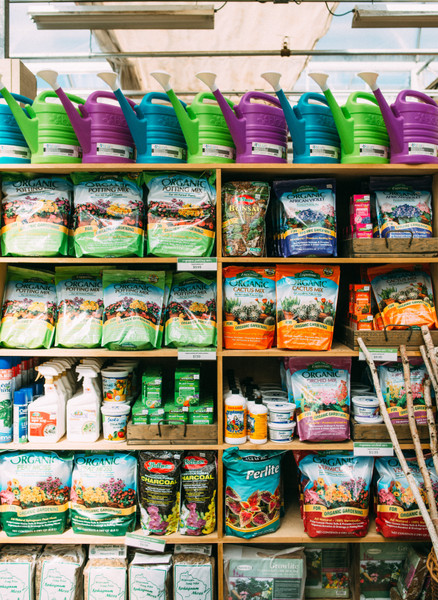Your Guide to Fertilizing Outdoor Gardens and Containers
Posted by Jessie Jacobson on Jun 30th 2021
The best days of summer are still ahead, and the garden is primed to perform at its peak. With proper watering and fertilizing techniques, your gardens and containers will look their best well into fall.
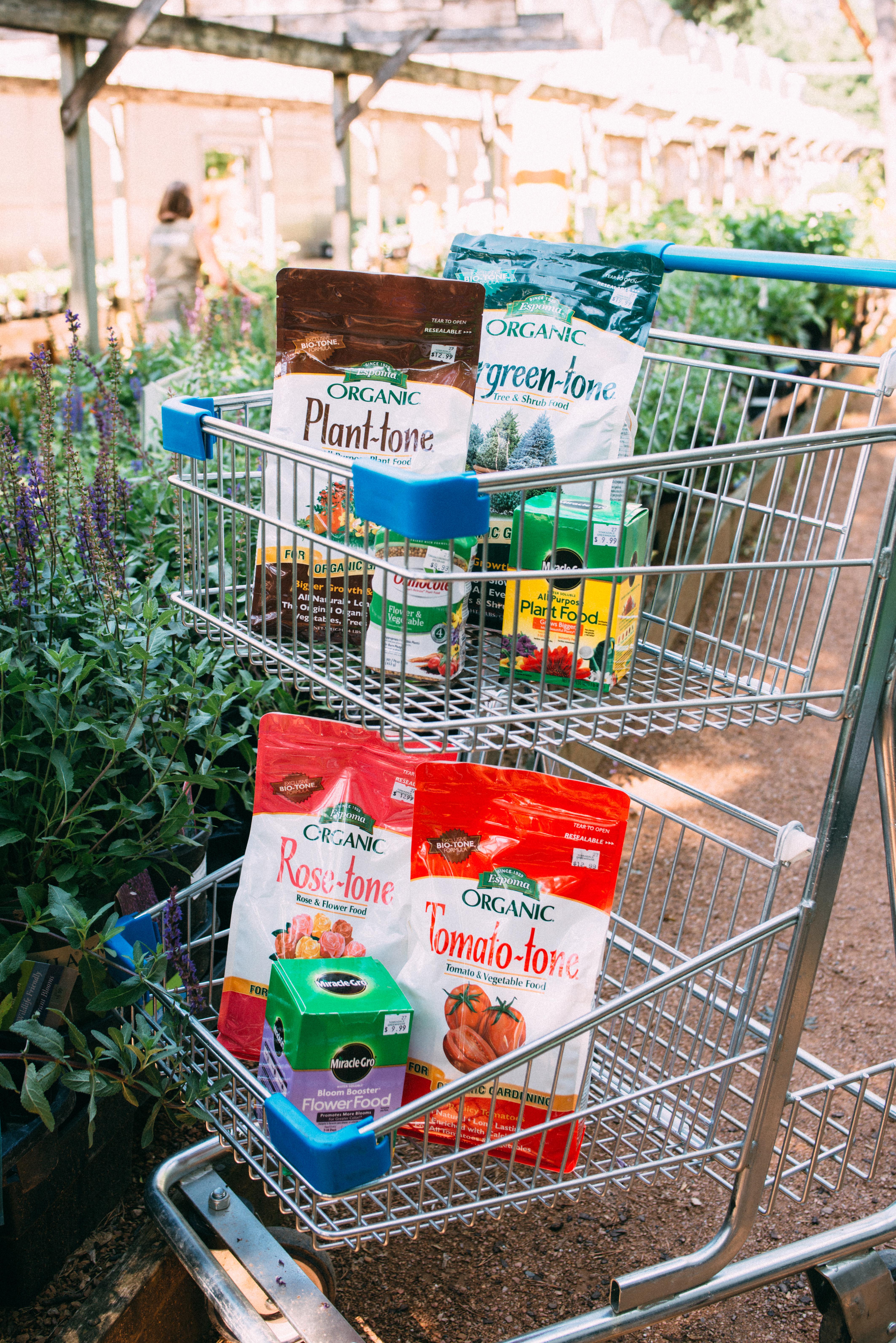
Navigating the fertilizer aisle
It should be no surprise, but like children and pets, plants need food. Here are some basics to make your next trip to the Solutions Center at Tonkadale a little easier to navigate.
What do those numbers mean?
Each package of fertilizer will list three numbers, __ - __ - __. These numbers indicate how much N-P-K, or nitrogen, phosphorus, and potassium are in each product. These are the macro nutrients that plants depend on for optimal growth. Kind of like Carbs, Protein, and Fats for us humans. Different plants need different ratios of food. Each element does a little something different for a plant. Nitrogen encourages vigorous, green growth. Phosphorus promotes blooms and strong root growth. Potassium also promotes root development and strengthens the plant against stressors. A fertilizer with 20-0-0 on the label will promote lush green growth but will not do much for flower production. Such a product would make for a good lawn fertilizer but won’t do much to impress your geraniums. Plants also require micro-nutrients to perform critical cell functions. Often, micro-nutrients can be found in healthy, organic soil as well as organic fertilizers, compost and garden amendments.
Check out this cool chart!
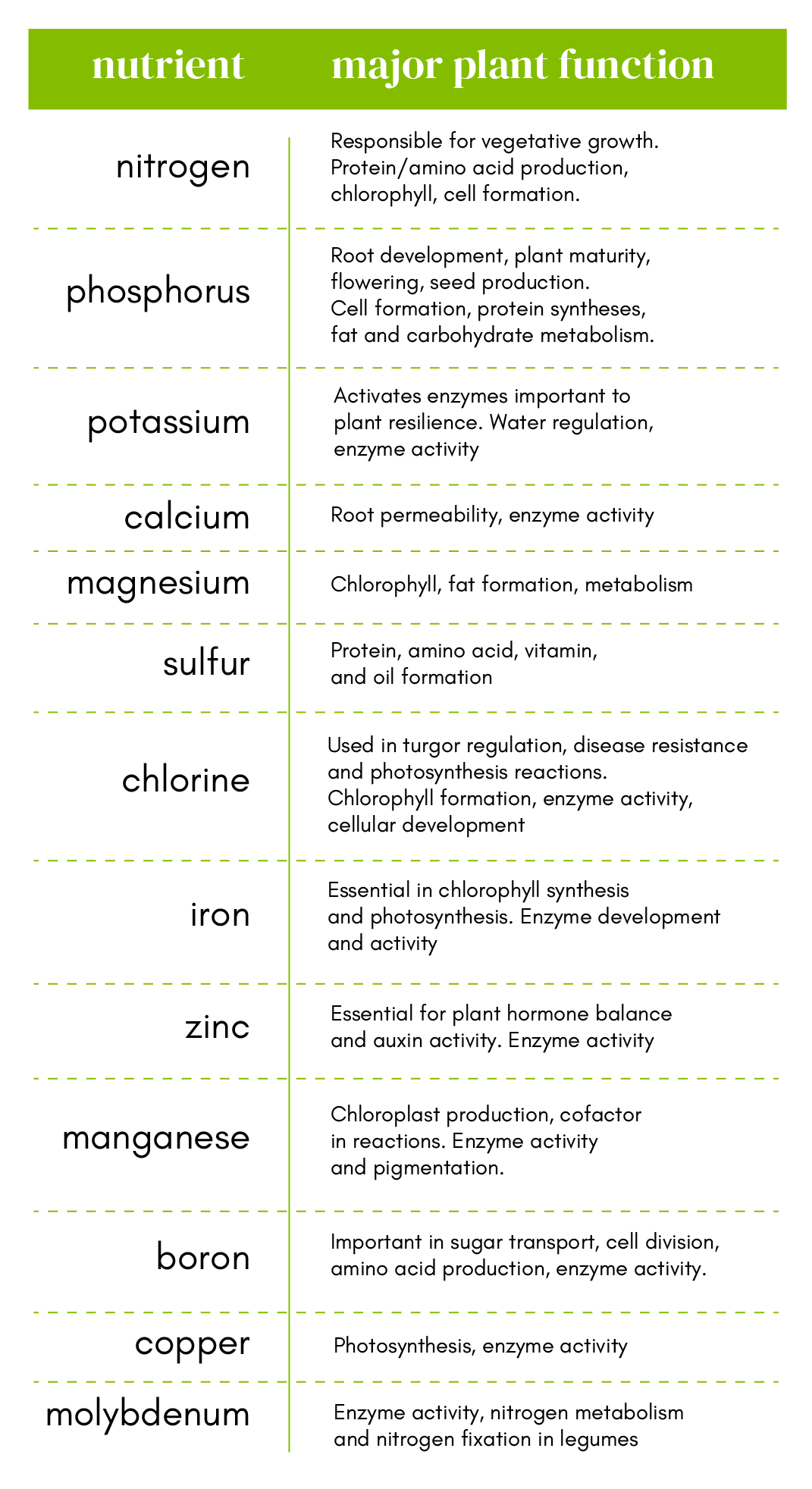
How to fertilize and with what!
Look at the label. Many fertilizers are marketed with a purpose in mind – Bloom Booster, Tomato Tone, Rose Tone etc. – to make choosing a fertilizer more approachable.
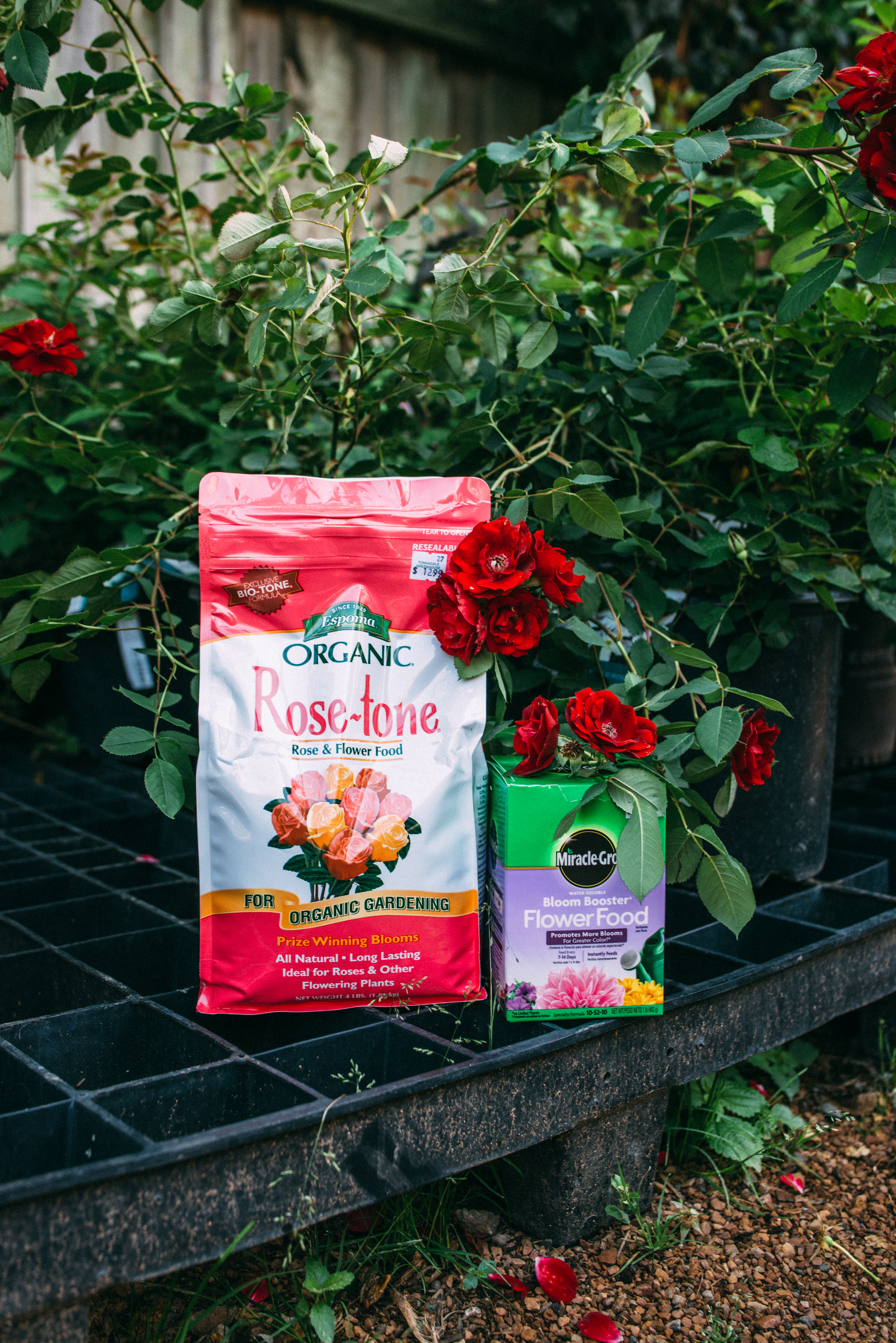
Annuals, Containers & Hanging Baskets
Annual flowers and foliage are the centerpieces of container gardens and hanging baskets and they are hungry! Synthetic fertilizers work just fine in containers and hanging baskets as we are not going to ear our petunias and potato vine, but there are many organic options available as well. We recommend a line-up of Miracle Grow options as an easy, water soluble fertilizer to mix with water. Use Mir-Acid (30-10-10) for acid loving plants such as petunias and calibrachoa. Use Bloom Booster (15-30-15) to encourage off the chart blooms. Fertilize containers and hanging baskets in a sunny exposure at least once per week. Fertilize shade containers and hanging baskets every two weeks. If you are a more hands-off container gardener, use a slow-release fertilizer such as Osmocote (14-14-14). Apply 1-2 times per year by sprinkling over the surface of the soil. Mix in to the top 1-3 inches of soil. As you water, each granule will release nutrients over time.
Perennials, Trees, and Shrubs
Your go-to for fertilizing perennials, trees, and shrubs is Espoma’s Organic Plant Tone (5-3-3). Apply to established perennials once in the spring and once in the fall. Use 1 lb. (one bag) per 100 square feet of garden or a generous handful for each plant. For shrubs, use 1 cup per foot of drip line, double the rate if the diameter is greater than 3 feet. For trees, use 3 lbs. per inch of trunk diameter, double for trees over 6 inches in diameter. Mix into the top 4” of soil before a soaking rain or water in.
Evergreens
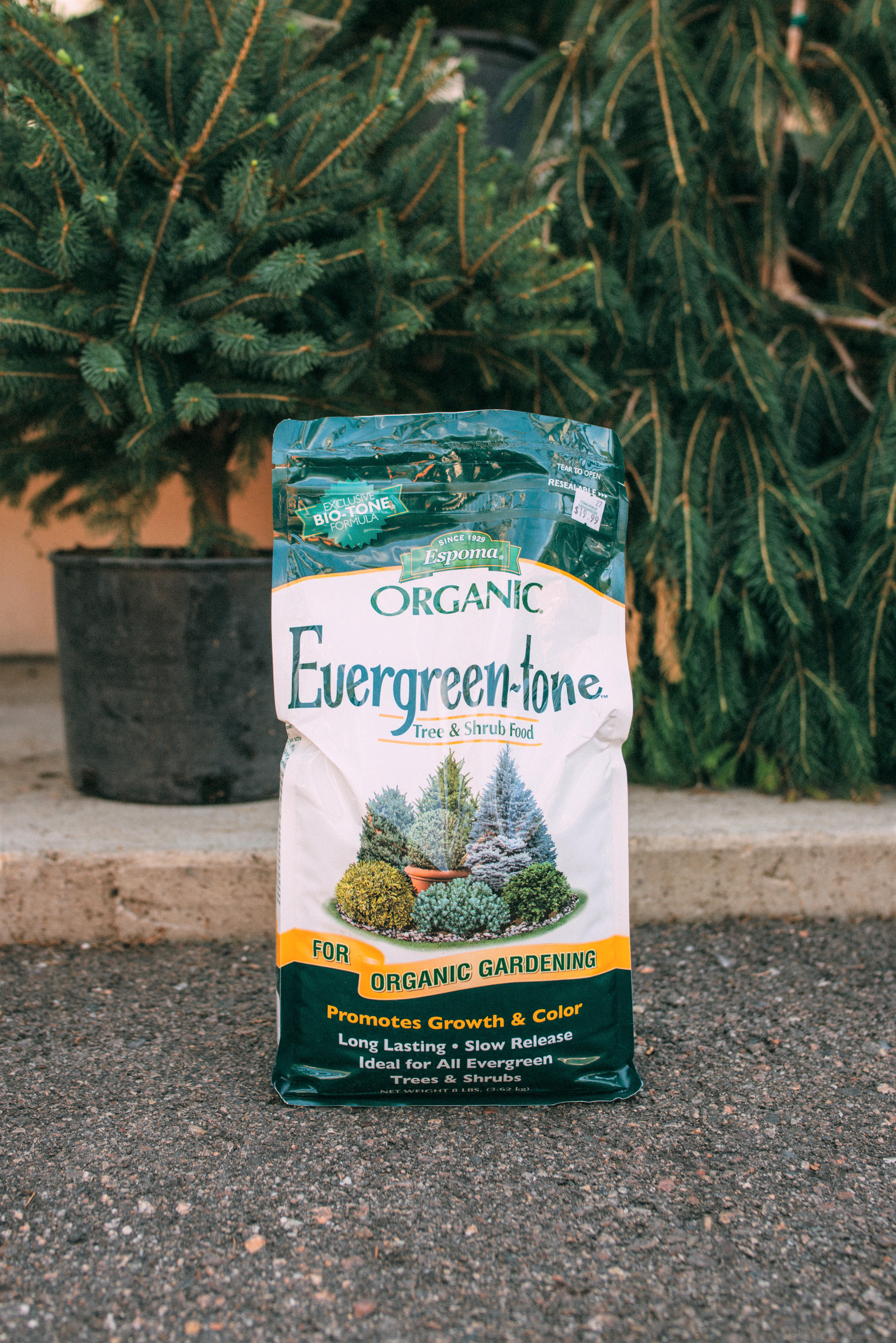
Espoma’s Organic Evergreen Tone (4-3-4) is great for all evergreen trees and shrubs which are often forgotten in the gardener’s fertilizing routine. For evergreen shrubs, apply 1 cup per foot of drip line and double the quantity if the drip line diameter is 3 feet or larger. Sprinkle the recommended amount around the drip line and water thoroughly. If the area is mulched, temporarily remove the mulch or feed at double the rate. For evergreen trees, apply 1 lb. per inch of trunk diameter, triple the quantity for trees with a diameter 3 inches or larger. Dig 3” wide holes around the drip line that are 12-18” deep and 2-3’ apart. Divide Evergreen Tone evenly between holes, backfill with soil and water thoroughly.
Vegetables & Herbs
For vegetable gardens, containers, and raised beds, there are a several great options.
Espoma’s Organic Garden Tone (3-4-4) is an all-purpose, organic, slow-release fertilizer suitable for all vegetables and herbs. Mix into the soil at planting and then continue to apply monthly throughout the growing season. Herbs don’t feed as heavily and will only require feeding at the time of planting and after a large harvest. For vegetable plants in the garden, apply 1/3 cup per plant. For garden rows, apply 1 1/3 cup per side to a 5 ft. row or 10 lbs. each side to a 100 ft. row. For veggies in containers, sprinkle 1.5 TBL per 12” pot. For herbs in the garden, use 1 TBL per plant and in containers, use ¾ TBL per plant.
Espoma’s Organic Tomato Tone (3-4-6) is designed to feed tomato plants and promote flower and fruit production without causing rapid green growth. Additionally, it provides much needed calcium to promote healthy fruit development. Apply two weeks after tomato plants are established and then twice per month during the growing season. For rows use 1 cup per side to a 5 foot of row. For single plants, use 3 TBL per plant. For tomatoes in containers, use 1.5 TBL per 12” pot.
Neptune’s Harvest Fish Fertilizer (2-4-1) is also an excellent choice for vegetable gardens. Use 1/8 cup per gallon of water. Feed every 1-2 weeks Apply until soil is saturated or as a foliar feed until runoff. It is best to do foliar feeds early in the day so that the leaves have time to dry.
What about compost?
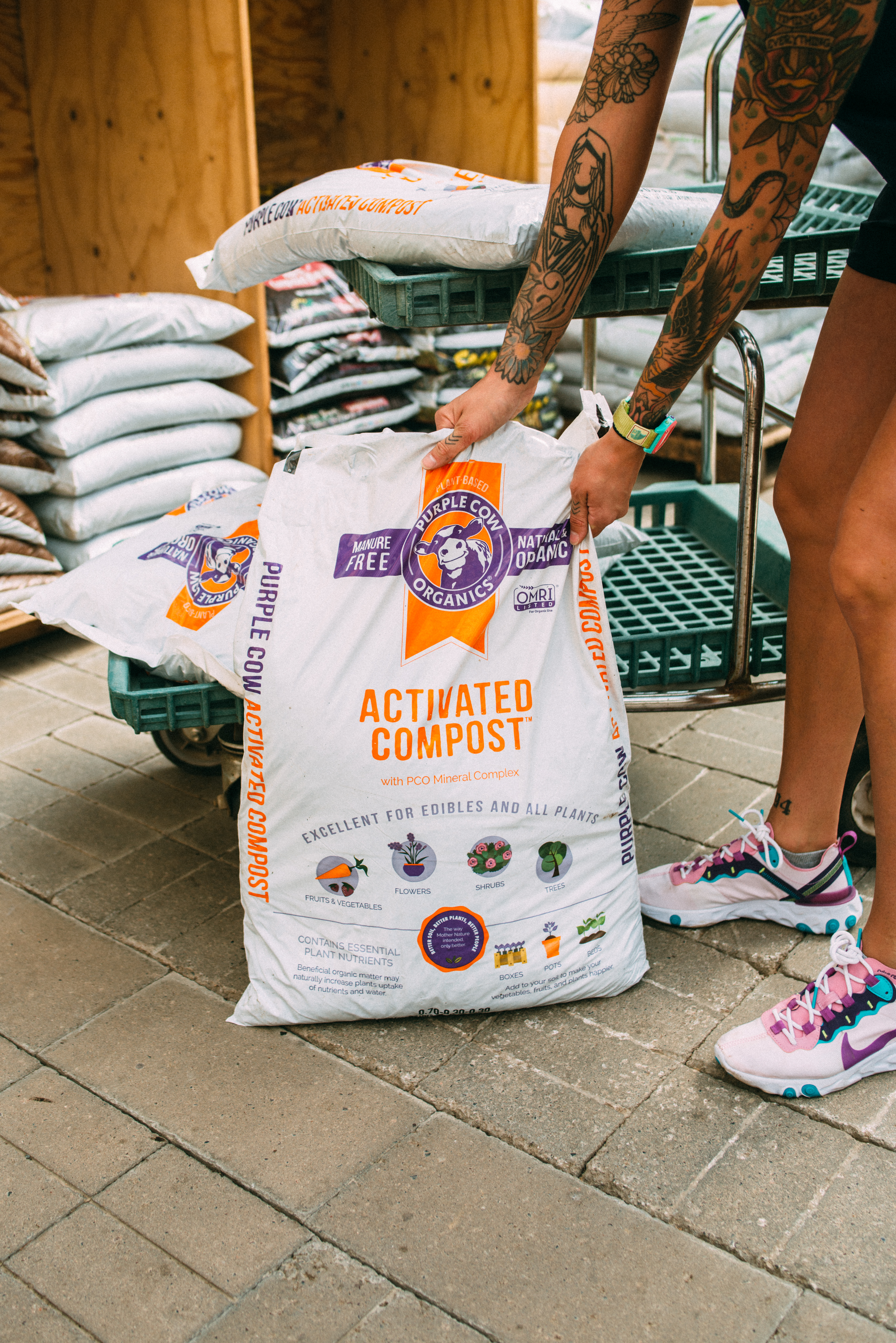
Another important consideration for growing healthy plants is the condition of the soil and the potential need for amendments. Compost is made from animal waste or organic matter and is a great amendment. It should be completely broken down and have the look, feel, and smell of soil. When applied to the garden, it helps loosen clay soils and provide drainage and when added to sandy soil it provides water holding capacity. Compost will contain some amount of naturally occurring fertilizer, as well. If you make your own compost, be sure it is completely broken down, so it doesn’t burn plant roots. If you purchase compost, buy from a trusted source. Good options include Chicken Manure (from chickens), Worm Castings (yup, worm waste),and Purple Cow’s Activated Compost (not really cow manure, but actually vegetable based). Applying compost is an easy way to enhance soils for planting, fertilize and amend throughout the season, and prepare garden beds in the fall. Soil is a living organism and is constantly changing. Happy soil produces happy plants. Healthy, nutrient-rich soil reduces the need for synthetic fertilizers and can also reduce pressure from pests and disease.
Don’t over think it, we are obsessed with your fertilizing success and can help ya find the best fertilizer for your situation. Whatever you grow, remember to feed it – you and the plants will be glad you did!

